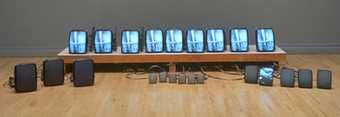Rise of installation art in galleries
Over the past ten years installation art has become a mainstream art form representing some of the most important and exciting art of our time. Contemporary artists are producing installation works that are entering the collections of European museums and institutions at an increasing rate. Installation works of art are prominent at all major international contemporary art festivals in Europe, such as documenta in Germany and the Venice Biennale.
The nature of installation artworks is distinct from traditional art objects. They demonstrate specific vulnerabilities both in terms of the contexts and technologies on which they are dependent. For example, they may require an active involvement by the spectator (interactivity) or be dependent on obsolete technologies for their realisation. The very act of installation is often complex, demanding a major commitment of care, time and resources.
Safeguarding installation art for the future
This project asks how we can best safeguard these expressions of our contemporary visual culture so that they can be experienced by future generations. The preservation and presentation of installation works of art requires an interdisciplinary approach to their conservation, production and installation, drawing on a wide body of expertise. This new area of conservation and collections management is therefore ideally suited to a collaborative approach by European museums in order to develop guidelines and models of good practice.
A project based on case studies
The project will be based on thirty case studies of installation works in the collections of participating museums. Analysis of these case studies will lead to the development of good practice and methodological tools, under the following main headings:
1. Preservation strategies
2. Artists participation
3. Documentation and archiving strategies
4. Theory and semantics
5. Knowledge management and information exchange
The project results (tools and guidelines for good practice) will be shared with the conservation community through seminars planned throughout the project. Information on the case studies and project results will also be presented online, accessible to both professionals and the general public.

